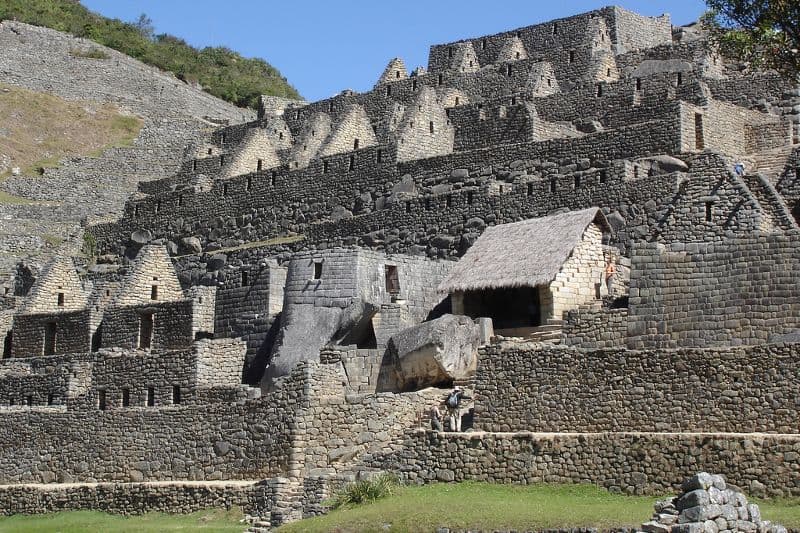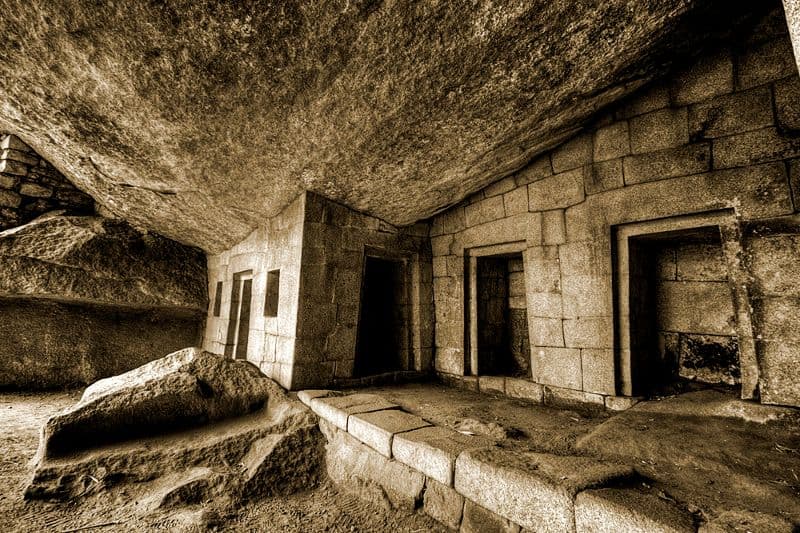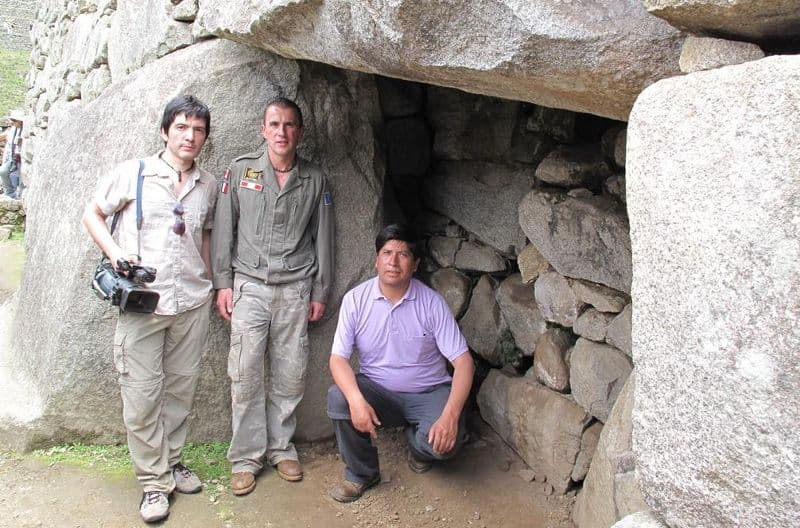Machu Picchu: all the tourist attractions of the Inca City
Machu Picchu is the first destination of South America and Peru. The Wonder of the World houses many tourist attractions that captivate visitors from all over the world. These are enigmatic places full of energy. Discover the mysteries of the Inca Citadel. A place that still keeps secrets for the visitor.
Machu Picchu Division – The Inca Citadel of Machu Picchu is divided into two sectors. To the south is the agricultural sector formed by terraces where agriculture was enough to sustain the Inca site. Towards the north the urban sector is located where the main stone constructions are located. The urban sector as well is divided into 3 neighborhoods: the sacred neighborhood, the neighborhood of priests and nobility and the popular neighborhood. This is what you will see in a visit to Machu Picchu.
- 1. Urban Area
- 2. Agricultural Area
- 3. The Huayna Picchu Mountain
- 4. The Temple of the Moon
- 5. The Machu Picchu Mountain
- 6. The Inti Punku
- 7.The Secret Door
1 – Urban Area
The Urban Zone shelters the residents of the Citadel. It is divided from the agricultural area by a wall 400 meters long. This area in turn is divided into two zones, the Hurin or sacred space and the Hanan or residential space.
1.1 – Sacred Square
The Sacred Plaza forms part of the urban sector, in the sacred quarter of Machu Picchu. It is surrounded by the Main Temple and the Temple of the Three Windows. It was the political-social and religious center of the Citadel. In the center of the Sacred Plaza was located an enormous sacred rock, which was removed when receiving irremediable damages when a helicopter landed with the presidents of the Andean Community of Nations.
1.2 – The Main Temple
The Main Temple is a stone building located in front of the Sacred Plaza. It is located in the heart of the urban sector. Due to the fine polish of its walls, archaeologists believe that the main religious ceremonies were carried out here. It is formed by 3 walls, those greater than 8 meters wide and 12 meters long. The passage of time has deteriorated this tourist attraction.
1.3 – The Royal Tomb
This structure is located under the Temple of the Sun. It is attractive represents a fine stone assembly where the lifeless bodies of the Inca aristocracy were housed. In the interior are carved in stone, four tombs of dimensions similar to the doors of the enclosure. In addition there is a work in the form of a house of three levels. It is believed that he represents Pachamama, goddess of the earth for the Incas. The whole royal tomb presents engravings with religious purposes: the sun, the moon, the stars, the mountains, etc.
1.4 – The Intihuatana
The Intihuatana or Intiwatana means “where the sun is tied”. It is located at the top of the urban area. It is an immense block of stone where the solstices and equinoxes are determined. It measures between one and two meters in height and two meters in diameter. It is also believed that it determines magnetic north. Of this attractiveness, it is believed that it radiates energy. His fame has made many people come close to touching the stone and feel the energy. Today they can not touch it but the energy is still felt, anyway.

1.5 – The Temple of the Sun
As its name says, the Temple of the Sun is a temple of stone that, according to archaeologists, served as a shrine to the sun. It is located at the top of the urban sector of Machu Picchu. This place is accessed by a trapezoidal door. It also served as an astronomical observatory. It is one of the few Inca structures made of circular walls. Below it is the Royal Tomb.
1.6 – The Temple of the 3 Windows
It is a set of stone enclosures around a square courtyard. In this enclosure, there is one in a polygonal shape with 3 trapezoidal windows. The place measures 10 meters long and 4 meters wide. It is located in the urban sector of Machu Picchu. On its meaning, it is believed that it represented the importance of the trilogy in the Andean cosmo vision. Such as the three worlds Hanan-Pacha, Kay-Pacha and Ujku-Pacha, represented by the 3 animals sacred by the Incas: the condor, the puma and the serpent.
1.7 – The Temple of the Condor
It is a construction of stone carved on a natural cave in such a way that it resembles the shape of the Andean condor, one of the animals sacred by the Incas. This temple is located in the urban sector of Machu Picchu. To see the shape of the sacred bird, the Incas carved a stone in the shape of the head of the condor on the ground. Behind the Temple of the Condor, hidden in a cave with underground dungeons. In addition, human niches were found. This place is called the Prisons of the Temple of the Condor.
1.8 – The Royal Residence
Also known as the “Real Enclosure”. It is the largest construction of the site, made of fine masonry and divided into two rooms. The first one had to lodge objects destined to the decoration due to the 10 niches that are there. At the back, through a stairway, there is an environment of 2 levels of uncertain function. Due to the fine architecture of the place, it had to serve as housing for the most important social class.
1.9 – The Sacred Rock
The Sacred Rock is a monolith 3 meters high and a base of up to almost 7 meters long. It is located in the north of the Inca Citadel, at the beginning of the entrance to the Huayna Picchu Mountain. Its shape resembles that of a puma crouched by what experts believe was a sacred monolith. It also resembles the hill Pumasillo, located exactly behind the Sacred Rock and whose shape is very similar to that of the hill. This rock is believed to also radiate energy.

2 – Agricultural Area
This area housed the agricultural space that supported the Ciudadela. It is characterized by the presence of stepped terraces or terraces of culture which reached up to 4 meters in height. Among the main products grown here are corn and potatoes.
2.1 – Surveillance post
It is an observer located above the terraces from where you can see both the agricultural area and the urban area. Its location takes advantage of early sunlight for what would also have served as a conditioning center for the different agricultural products that existed in the empire of the Incas.
2.2 – First group of platforms
They are the platforms located at the entrance of the Citadel. Its location strategically took advantage of the solar rays for a better production.
2.3 – Platforms of the low sector
It is the sector that has the largest number of platforms: 40 in total. These were the main power supply of the Citadel.
3 – The Huayna Picchu Mountain
The Huayna Picchu Mountain or ‘ Young Mountain’ is the summit that stands out in the classic postcard of Machu Picchu. It is located north of the Inca City of Machu Picchu. Due to its privileged location at the top of the City, it served as an observatory. In it is the Temple of the Moon. To get to the top, you must climb its steep narrow stairs with dizzying cliffs. This adventure is one of the most requested by tourists. Admission tickets are sold separately and are booked up to 6 months in advance.

4 – The Temple of the Moon
The Temple of the Moon is an elaborate construction in a natural cave located on top of the Huayna Picchu Mountain. It is believed that the walls of this enclosure had a religious purpose although the purpose of this temple is not yet known for sure. In the center of the cave where it is built stands a throne made of rock. The name Temple of the Moon was determined arbitrarily.

5 – The Machu Picchu Mountain
This mountain is on which the entire Inca Citadel of Machu Picchu rests. It rises to a little over 3 thousand meters above sea level, almost 600 meters above the Wonder of the World. From its summit and along the road you can glimpse all the landscape splendor of the geography on which the Inca enclosure rises. To enter the mountain you must buy the ticket Machu Picchu + Mountain. It is a great alternative if you did not get an entry for Huayna Picchu.

6 – The Inti Punku
Also known as the “Puerta del Sol”, it is a lithic structure that in the days of the Incas served as a control center for the exits and entrances to the Inca Citadel. It is located at 2 745 m.s. next to Machu Picchu Mountain, 1 hour from the entrance to Machu Picchu today. It is believed that it was also a place of sun worship due to its location over which the sun reflected each year during the mornings of the summer solstices. Currently, it is the first view when entering the Wonder of the World by the Inca Trail.

7 – The Secret Door
The Secret Door is a kind of stone-walled opening located in the urban sector and under the building of the Three Covers of Machu Picchu. Despite its location in the urban center of the Inca City, it was discovered in 2010 by the French archaeologist David Crespy. Although there are still no investigations or reliable evidence, it is estimated that this secret door will lead to several hidden chambers filled with gold. In addition it is presumed that it could be the Inca Pachacutec’s tomb.

The Inca Citadel of Machu Picchu still has many secrets to unveil. Know all the mysteries of the Wonder of the World. It can be the trip of your life!


